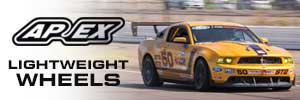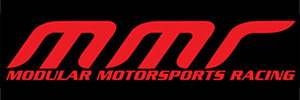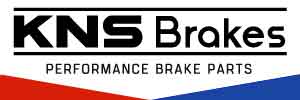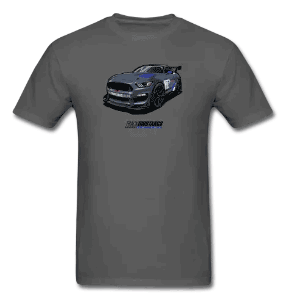- Welcome to the Ford Mustang forum built for owners of the Mustang GT350, BOSS 302, GT500, and all other S550, S197, SN95, Fox Body and older Mustangs set up for open track days, road racing, and/or autocross. Join our forum, interact with others, share your build, and help us strengthen this community!
You are using an out of date browser. It may not display this or other websites correctly.
You should upgrade or use an alternative browser.
You should upgrade or use an alternative browser.
Interesting Video on the Efficiency of the Coyote Motor
- Thread starterVoodooBoss
- Start date
This site may earn a commission from merchant affiliate links, including eBay, Amazon, and others.
More options
Who Replied?TymeSlayer
Tramps like us, Baby we were born to run...
Simple Formula? I'm just the driver here.
Mad Hatter
Gotta go Faster
That was a cool articile. Well explained!
Grant 302
basic and well known psychic
That’s a decent explanation keeping in mind the target audience are non-engineers.
The efficiency of the Coyote is the reason I bought a 2011 in the first place. Just by the published specs, it had to have VE at or over 100%. Articles like this from just over 10 years ago confirmed my estimate:

 www.hotrod.com
www.hotrod.com
“The company claims volumetric efficiency of 110 percent at peak torque rpm and around 100 percent at peak power rpm-exceptional numbers for a normally aspirated, volume-production engine. Not that many years ago, only the most exotic racing engines were capable of volumetric efficiencies of greater than 100 percent naturally aspirated.”
The real beauty of the Coyote platform is the wide and high RPM range that it maintains such high VE. EE’s explanation only covers peak torque specs.
The efficiency of the Coyote is the reason I bought a 2011 in the first place. Just by the published specs, it had to have VE at or over 100%. Articles like this from just over 10 years ago confirmed my estimate:

2011 Mustang Engine - Inside Ford's 412 HP 5.0L Ti-VCT DOHC V-8 Engine - Hot Rod Magazine
In this tech article HOT ROD takes a look at the new Ford 5.0L Ti-VCT DOHC V-8 engine which will power the 2011 Ford Mustang with 412 hp and 390 lb-ft torque. Only at www.hotrod.com, the official website for Hot Rod Magazine.
“The company claims volumetric efficiency of 110 percent at peak torque rpm and around 100 percent at peak power rpm-exceptional numbers for a normally aspirated, volume-production engine. Not that many years ago, only the most exotic racing engines were capable of volumetric efficiencies of greater than 100 percent naturally aspirated.”
The real beauty of the Coyote platform is the wide and high RPM range that it maintains such high VE. EE’s explanation only covers peak torque specs.
Mad Hatter
Gotta go Faster
I guess most of that was like 1st yr Physics. But interesting to see the need for velocity in the porting of heads.
Grant 302
basic and well known psychic
Perhaps a relevant example...based on his ‘style’ of analysis, the 2011 GT engine would ‘rate’ higher than the 2012 Boss engine.
I guess most of that was like 1st yr Physics. But interesting to see the need for velocity in the porting of heads.
Yup ....I missed that as well
Norm Peterson
Corner Barstool Sitter
Any intake 'ram air' effect needs velocity, else it won't have the momentum necessary to squeeze itself into the cylinder against the air that's already in there. Think of that momentum as intake air's own momentary "forced induction".
Norm
Norm
Grant 302
basic and well known psychic
Sure, velocity is important. But often missing from casual discussion is the need for intake design for timing of pulses. Without increased pressure gradients VE wouldn’t ever exceed 100% naturally aspirated.
This does remind me of old traditional engine builder opinions that centered around head work to tend to raise the ports. Even when port velocity was understood to be important, the tendency was to raise most port profiles. I think Ford has done well to evolve away from that thinking as I’ve seen in various modular head designs.
This does remind me of old traditional engine builder opinions that centered around head work to tend to raise the ports. Even when port velocity was understood to be important, the tendency was to raise most port profiles. I think Ford has done well to evolve away from that thinking as I’ve seen in various modular head designs.
Norm Peterson
Corner Barstool Sitter
Understood. Chrysler's cross-ram 413 perhaps being the most outrageous example of intake tuning.
I imagine current port profiles have become what they are for swirl and tumble reasons. CFD has to beat trial and error iterations in the metal at least to get you pointed in the right direction.
Norm
I imagine current port profiles have become what they are for swirl and tumble reasons. CFD has to beat trial and error iterations in the metal at least to get you pointed in the right direction.
Norm
drano38
Wayne
- 1,130
- 318
Now my cranium hurts!
I'll let the engineers design them, and I'll just smile as I hit the apex, track-out and go to full throttle.
I'll let the engineers design them, and I'll just smile as I hit the apex, track-out and go to full throttle.
Grant 302
basic and well known psychic
Agreed. I can’t think of a dual carb where the two could be so far apart. Can’t say if those ports follow some of the same low port thinking, as I’ve never seen inside one. But the arc of the runners would be conducive to a low port design.Understood. Chrysler's cross-ram 413 perhaps being the most outrageous example of intake tuning.
I’d actually like to think that it was somebody or some team that came up with the idea to make the ports essentially a straight shot. Focus on filling the cylinder. I’d think tumble might benefit from the symmetry, but I doubt swirl was much of a consideration...at least as opposed to the old 2V PI heads.I imagine current port profiles have become what they are for swirl and tumble reasons. CFD has to beat trial and error iterations in the metal at least to get you pointed in the right direction.
Not to say that CFD wasn’t used. A lot of examples were given for its use in intake and runner modeling. From what I remember of the early articles that featured some of the team engineers.
Norm Peterson
Corner Barstool Sitter
Interesting . . . sounds like classic crossflow design.I’d actually like to think that it was somebody or some team that came up with the idea to make the ports essentially a straight shot. Focus on filling the cylinder.
I doubt anybody had to look very hard to find inspiration. Start with a 1950's / 1960's Chrysler hemi head and stuff a couple more valves in each cylinder. Something I think Chrysler actually toyed around with until NASCAR or somebody said it wasn't going to be allowed to play with the rest of the kids.
Norm
Grant 302
basic and well known psychic
I agree or at least suspect it was inspired by such earlier designs. And I like to believe that comes from humans that understand the past over just following CFD iterations that took time and incremental changes toward similar strategies.Interesting . . . sounds like classic crossflow design.
I doubt anybody had to look very hard to find inspiration. Start with a 1950's / 1960's Chrysler hemi head and stuff a couple more valves in each cylinder. Something I think Chrysler actually toyed around with until NASCAR or somebody said it wasn't going to be allowed to play with the rest of the kids.
Norm
I always think of the Hemi layout as a way to completely unshroud the intake valve with the stem angled so far away from centerline. Pushing such limits while adding valves and using a relatively small, flat combustion chamber is still quite a departure from classic designs. Especially considering the small bore and how close all the valves get to the wall.













